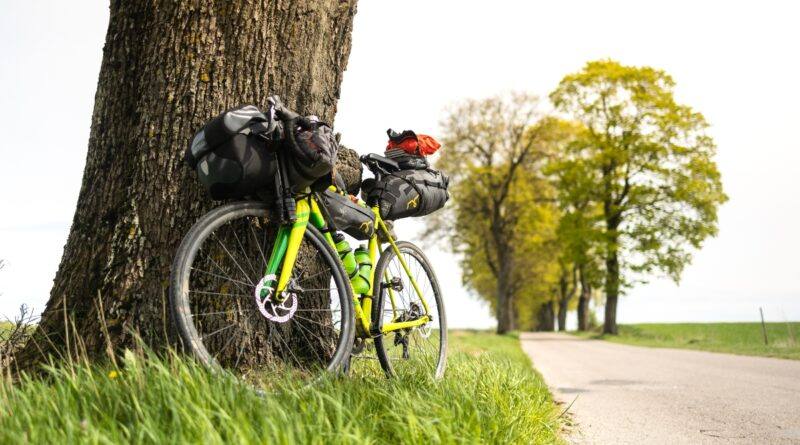The New Summer Journeys Stir Hope In Diaspora Youth
Travel & Leisure · The WFY · June 2025 By WFY Bureau – reporting from Kochi, Ahmedabad and Toronto
Summer Roots: Diaspora Families Reconnecting with India through Heritage Travel
1. A summer of homecomings
On a humid evening in late May, the arrival hall at Kochi International Airport feels more like a reunion venue than a transit point. Grandparents wield garlands of jasmine. Teenagers in Toronto Raptors hoodies blink at the Malayalam signboards. Behind the glass, the ‘Dubai flight’ carousel disgorges an unlikely cargo: cardboard cartons of chocolates, PlayStations, jarred pickles—and dozens of children who have never lived a day in India but still call it “back home”.
Welcome to Summer 2025, the biggest season of heritage travel India has seen in a decade. Visa-processing firm Atlys says applications for family trips to India between June and August have jumped 68 per cent year-on-year (timesofindia.indiatimes.com). The Ministry of Tourism’s provisional tally shows foreign tourist arrivals rebounding to 9.24 million in 2024, with analysts projecting 11 million for calendar 2025, just 9 per cent shy of the pre-COVID peak (tourism.gov.in, timesofindia.indiatimes.com). Industry insiders estimate that as many as one-in-three summer visitors now hold Person of Indian Origin (PIO) or Overseas Citizen of India (OCI) status.
What draws them is neither beaches nor business conferences but roots—ancestral villages, temples, lost dialects, family lore. For second- and third-generation diaspora youth from the United States, Canada, the Gulf and the United Kingdom, the pull of identity has turned the annual summer holiday into a cultural pilgrimage.
2. The rise of ‘heritage itineraries’
Travel consultant Meera Pillai calls it the “grandparent itinerary”:
- Two nights in the metro to decompress
- Five days in the ancestral town
- A long weekend in a regional heritage circuit—Chettinad mansions, Kutch crafts, Malabar synagogues
- A volunteering or eco-tourism module to “give back”
Her firm handled 740 such bookings in summer 2024; this year it will cross 1,200, driven mostly by US-based Indian families.
Tech is fuelling the boom. AI-powered platforms now stitch flight searches, heritage-homestay availability and temple-festival calendars into a single mobile dashboard, reducing planning friction (timesofindia.indiatimes.com).
3. State programmes courting the diaspora
Kerala’s Roots scheme
Kerala was an early mover. The Department of Non-Resident Keralites Affairs (NORKA) launched the “Roots” Heritage Tour in 2017; by 2024 the programme had welcomed 5,400 diaspora youths from 32 countries. Post-pandemic relaunches include village homestays, Malayalam crash courses and backwater clean-ups. The 2025 state budget earmarks ₹150 crore for broader NRK engagement, including an interactive Loka Kerala Kendram in Thiruvananthapuram (timesofindia.indiatimes.com).
Gujarat’s diaspora circuits
Gujarat’s Tourism Policy 2021-25 offers up to 15 per cent capital subsidy to homestay owners who cater to OCI tourists on the Garvi Gujarat Roots trail: Dwarka, Somnath, the Patan step-wells and craftsmen’s villages in Kutch (gujarattourism.com).
Punjab’s heritage push
Punjab’s government approved a record ₹28 billion package in June 2025 to conserve 60 heritage sites, many in rural districts from which Punjabi emigrants once departed (profit.pakistantoday.com.pk, 24newshd.tv). Diaspora donations are matched rupee-for-rupee for every qualifying gurdwara restoration.
Across India, at least nine states now run diaspora-oriented heritage schemes—a quiet acknowledgment that sentimental tourism can be an economic engine.
4. What the numbers say
| Indicator | 2019 | 2024 | 2025 (proj.) |
| Foreign Tourist Arrivals (millions) | 10.9 | 9.24 | 11.0 (tourism.gov.in, timesofindia.indiatimes.com) |
| Share of OCI/PIO visitors (est.) | 21 % | 28 % | 33 % (industry estimate) |
| Remittances to India (US $ bn) | 83 | 120 | 129 (newindiaabroad.com) |
| Avg. family spend on India trips | ₹1.9 lakh | ₹2.3 lakh | ₹2.4 lakh (+4 %) (business-standard.com) |
Beyond airfares and hotel stays, heritage travel injects disposable income into tier-2 and tier-3 destinations—Hampi, Orchha, Gokarna, Chettinad—whose visitor counts are growing fastest (hospitalitynews.in).
5. Stories from the road
“I finally saw the well my grandmother fetched water from.”
— Asha Menon (16), Birmingham-born, after a week in Palakkad district.
Asha and her brother spent mornings learning traditional percussion at a local temple and afternoons scanning brittle photo albums with their great-uncle. “Instagram can’t replicate the smell of jackfruit sap,” she laughs, “but now those stories feel real.”
“We stitched katab quilts with Kutch artisans.”
— Rahul & Priya Patel, New Jersey parents travelling with two sons.
Their customised Gujarat circuit included a day-long workshop at Bhujodi village; they left behind two smartphones for artisans to launch an online store. “It wasn’t charity. It was mutual discovery,” says Rahul.
“Volunteering flipped my idea of privilege.”
— Sara Khan (22), second-generation Emirati-Indian, after a fortnight teaching English in Malerkotla, Punjab.
Sara’s group, organised by an Abu Dhabi alumni network, partnered with Punjab’s new heritage-school twinning programme. Her take-away: “Diaspora privilege is useless unless we deploy it back home.”
6. Cultural festivals as economic catalysts
The Chettinad Heritage & Cultural Festival, launched in 2023, now draws 8,000 international visitors each January, generating ₹2 million daily for local businesses and raising domestic tourist numbers by 8 per cent (theguardian.com). Many attendees are diaspora Tamils who sponsor mansion restorations in exchange for timeshare access—proving heritage can be monetised without loss of authenticity.
7. Tech meets tradition
- AI itinerary builders recommend lesser-known step-wells, synagogue walks, and oral-history sessions based on family surnames (timesofindia.indiatimes.com).
- UPI-linked QR codes in rural homestays let guests tip folk performers instantly.
- Virtual genealogy vaults allow visitors to upload temple-archive scans so cousins abroad can access digitised family trees.
These tools address a common complaint: heritage trips used to rely on patchy local contacts; now they run on data and digital payments.
8. Challenges and cautions
- Over-tourism pressures at fragile sites (e.g., Varanasi ghats, Hampi ruins) have prompted new visitor caps.
- Authenticity debates: Instagram-friendly “heritage villages” risk reducing culture to décor.
- Infrastructure gaps in smaller airports and rural highways can dampen first-time visitors’ enthusiasm.
- Visa bottlenecks remain for families in the Gulf during Eid overlaps.
Stakeholders—from panchayats to policy-makers—must balance economic gain with conservation and community consent.
9. The wider soft-power dividend
Heritage travellers return as informal ambassadors. A 2024 survey by community site IndianDiaspora.org found 74 per cent of second-generation respondents felt “more confident explaining Indian culture” after a roots trip (indiandiaspora.org). That cultural fluency translates into diverse boardrooms, classrooms, and political arenas abroad, enhancing India’s soft-power reservoir.
10. WFY’s call to action
- Plan with purpose: Choose at least one activity that supports local artisans or conservation.
- Travel light, spend local: Offset carbon with train journeys; buy crafts directly.
- Record oral histories: A smartphone interview with an elder is priceless heritage.
- Share responsibly: Tag #SummerRootsWFY to inspire others while respecting privacy and sacred spaces.
Home is a journey, not a postcode
For the global Indian family in 2025, a summer holiday is no longer a postcard snap at the Taj but an act of reclamation. It is walking a dusty lane where ancestors once trod, tasting millet recipes nearly forgotten, and leaving behind more than footprints—perhaps a scholarship, a restored cistern, or simply a story retold around another dinner table in another hemisphere.
As flight boards flip through June and July, the chorus of accents at Indian airports becomes a living archive of migration and return. Summer roots, it turns out, grow deep—and in that soil, both homeland and diaspora find new futures to harvest.
Travel Desk at The WFY, chronicling global Indian journeys from Guyana to Gokarna.
(tourism.gov.in, timesofindia.indiatimes.com, timesofindia.indiatimes.com, gujarattourism.com, profit.pakistantoday.com.pk, 24newshd.tv, timesofindia.indiatimes.com, business-standard.com, newindiaabroad.com, timesofindia.indiatimes.com, theguardian.com, hospitalitynews.in)




